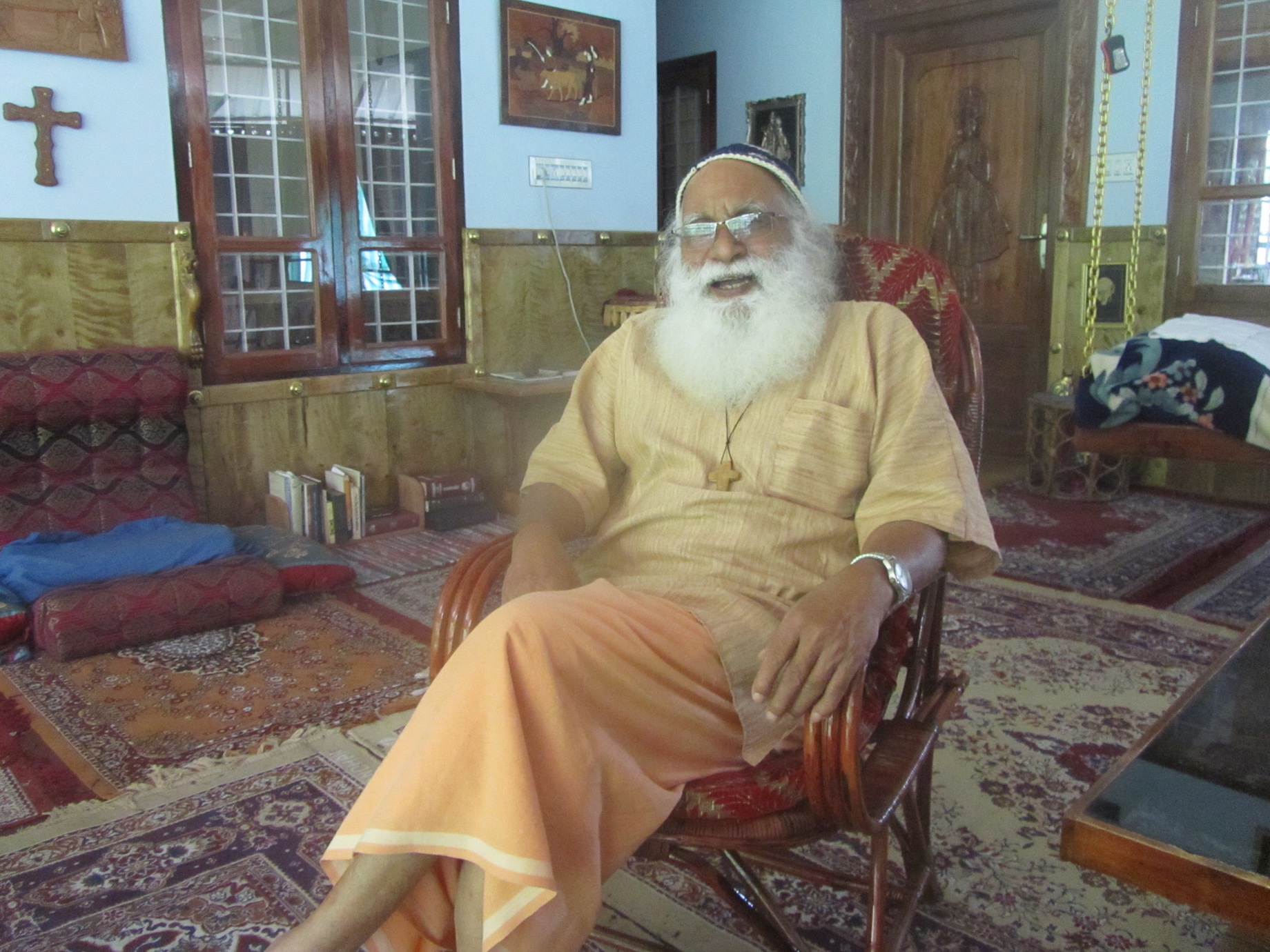Married Priests in the Catholic Church

(This is a very emotionally-charged, controversial topic. So I got up this morning at 5:30 and prayed so what I write here is specially approved by accounts given in the Scriptures, the Holy Spirit, and, above all, my conscience. I have briefly broached this topic in my writings and speeches elsewhere. But here I want to bring insights gleaned from scripture, theology, spirituality, psychology and my life experience in India and the USA as a married priest in an ashram to bear on this topic. Needless to say I had 25 years of religious life as a Jesuit before I left the Jesuits while I was a professor training priests in Papal Seminary and De Nobili College (Jesuits) and other religious institutions that comprise Jnana Deep Vidyapeeth (JDV), Pune, India. With profound gratitude to the Jesuits for the opportunities I received, I want to say I am who I am today due to the solid training I got from the loving and caring Jesuits – Swami Snehananda Jyoti)
God created man and woman in his own image (Genesis, 1: 27). In the first and second chapter of Genesis the unique dynamics of the relationship between man and woman is described. God has put such yearning in man for the woman that he will leave even his father and mother, and will cleave to his woman (wife) to the point of both becoming one body (2: 24). The incomparable passion for each other from the beginning of creation is very clear. Now coming to the New Testament of the Bible, the first head of the Church, Peter, supposedly chosen by Christ, was a married man. The first Pope, Peter (Cephas) was a married Pope. Peter was such a timid weakling before Christ’s Resurrection that he even denied Christ thrice on the night of Christ’s passion. St. Paul in his first letter to the Corinthians, (9: 1-7) wrote that all Christ’s disciples including Peter were accompanied by their wives. And they were provided food and drink. Paul in fact is complaining about being questioned, examined, and discriminated against precisely because he and Barnabas were not married. Christ said that from the beginning God made humans male and female, and a man shall leave his parents, and be joined to his wife and the two shall become one flesh (Matthew 19: 4-6). Writing to the Ephesians Paul repeated the same message (5: 31). Paul wrote in his first letter to Timothy (3: 2) that a bishop must be above reproach and the husband of one wife.
Historically there were 7 married Popes of whom four are saints. There were three Popes who were sons of Popes. There were Popes who had illegitimate children. There were Popes who were sexually active during their pontificate. There was a teenager Pope who was elected Pope at 18, and died less than 9 years later of a stroke while in bed reportedly with a married woman. There was such gross immorality that some accused him of converting his Lateran palace residence into a brothel. The second Lateran Council in 1139 abolished married priesthood and made celibacy mandatory for all priests. Yet many priests continued their priestly ministry even though they were married. Some Popes in the 15th and 16th centuries were notorious for their sexual immorality. Pope Innocent VIII and Alexander VI are worthy of special mention. It is also good to remember here that there were also three laypersons who were selected to become Popes.
With the conversion of the Roman Emperor Constantine in the fourth century, the horribly persecuted Church by the Roman Emperors became the Church triumphant. Slowly the Holy Spirit began to be replaced by the Worldly Spirit. Christ had cast out the ruler of this world (John, 12: 31); the ruler of this world had no power over him (John, 14: 30; 16: 11). With the worldly spirit coming in, the ruler of this world began to revive. And currently he has great influence over the priestly class and the hierarchy that exclusively rules the Church. He is organizing the ultra-conservative, status-quo bishops, and cardinals, making life very difficult even for a moderate and compassionate Pope Francis. Yet Christ was a layman whose death on the cross alone satisfied Caiphas (John, 18: 14), the Supreme High Priest or the Pope of that time, even though, Pilate, a pagan Roman Governor found no crime in Christ (John, 18: 38; 19: 6).
Coming back to virginity or celibacy, the Council of Trent (1545-1563), largely a response to Protestant reformation, condemned anyone who held virginity or celibacy was not better than marriage (Canon 10). The belief that celibacy was considered to be superior to marriage continued till the Second Vatican Council (1962-1965). The Second Vatican Council gave equal status to marriage and celibacy. After this Council there was a great exodus of priests to get married. Vocations to priesthood and religious life also continue to decline.
Spiritually, sanctity depends totally on a life lived according to God’s will. A married or celibate person can become a saint. Surrendering to God’s will is the key to holiness. Psychologically living a life in freedom for all is essential. Marriage is a fundamental human right. A perpetual vow of celibacy is meaningless unless it becomes perpetual due to ongoing, continual discernment and choice. No vow is a fundamental human right. One can make a vow if it helps to do God’s will or live in a religious congregation. Only the freedom to make a vow is a fundamental right. A person can change in freedom a decision once made in freedom if there is a compelling reason for it. Any change of a serious decision should only be made after due discernment in prayerful reflection. A vow like the rule of keeping the Sabbath is for human and not human for the vow.
It is interesting that a couple of days ago Pope Francis stated that a married person can become a priest. This is a welcome change in his thinking. This certainly can pave the way for married priests. This change, good as it is, is not good enough. But it is regrettable that he is not open to a priest currently in ministry getting married. He is gradual and cautious in his approach. So I will not be surprised about changing his mind on this. If he is not capable of making that decision, he needs to make way for someone who can. This decision is not at all easy. The entire Church needs to be gradually prepared for this decision. In the early Church elders presided at the Eucharist. And I do not have any difficulty in thinking that there were also some women elders who presided at the Eucharist. In any case there is no credible doctrinal objection to married priesthood or the priesthood of women. These changes are bound to happen in due time. No individual can stop them as long as the Holy Spirit is not against these changes. Due to rampant and widespread corrupt practices among the priests in the medieval times, powerful monastic orders arose as a corrective measure. Times have changed. Instead of keeping the Second Vatican Council in suspended animation, we need to revive it, and build on it with another Council long overdue. Imparting God-experience to all, this Council can usher the Church into the modern world, and can prepare the Church to deal with the materialistic spirit and challenges of this world.
Swami Snehananda Jyoti
















